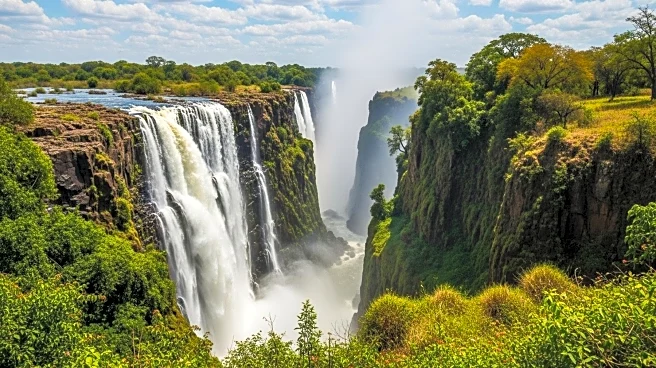What's Happening?
The ancient city of Carthage, a UNESCO World Heritage site located in modern-day Tunisia, is facing significant threats from climate change. Rising sea levels, increased salinity, and intensified wind erosion are damaging the ruins, including the Baths of Antoninus and the Punic Port. Experts warn that these environmental factors are putting the archaeological heritage at risk, necessitating urgent mitigation measures. UNESCO has highlighted climate change as a major threat to global heritage sites, with a recent report indicating that 73% of such sites are exposed to water-related hazards.
Why It's Important?
The deterioration of Carthage's ruins underscores the broader impact of climate change on cultural heritage worldwide. As sea levels rise and weather patterns become more extreme, many historical sites face the risk of irreversible damage. Protecting these sites is crucial not only for preserving history but also for maintaining cultural identity and supporting sustainable development. The situation calls for increased investment in conservation efforts and climate adaptation strategies to safeguard these irreplaceable treasures.
What's Next?
Efforts to protect Carthage and similar sites will require a combination of emissions reductions and practical adaptation measures. This includes reburial of fragile remains, consolidation of masonry, and installation of protective shelters. The international community, including UNESCO, must enhance its support for heritage protection, integrating these efforts with broader climate policies. Continued research and monitoring will be essential to develop effective strategies for preserving cultural heritage in the face of climate change.
Beyond the Headlines
The threat to Carthage highlights the ethical responsibility of preserving cultural heritage for future generations. It raises questions about the balance between development and conservation, and the role of international cooperation in addressing global challenges. The situation serves as a reminder of the interconnectedness of environmental and cultural issues, emphasizing the need for holistic approaches to sustainability.













